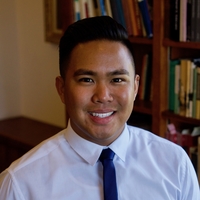Ethnic Studies Education turn. Growing support for the movement for K-12 Ethnic Studies is revealing a necessary (re)imagining of what education can become and subsequently how and why teacher education must change. In this article, I use... more
Ethnic Studies Education turn. Growing support for the movement for K-12 Ethnic Studies is revealing a necessary (re)imagining of what education can become and subsequently how and why teacher education must change. In this article, I use portraiture to share the experiences of two veteran teachers of Color. The portraits illuminate how Ethnic Studies was central for their learning to interrogate white programs and teacher educators on the utility of Ethnic Studies for teacher education.
There is a paucity of research on the educational experiences of Filipinx Americans, the second-largest Asian American group in the United States. Studies that do exist often lump Filipinxs with other Asian Americans or present them... more
There is a paucity of research on the educational experiences of Filipinx Americans, the second-largest Asian American group in the United States. Studies that do exist often lump Filipinxs with other Asian Americans or present them devoid of critical contexts that shape their experience, namely, colonialism and racialization. Using a desire-based framework and empire as an analytic, we conducted a semi-systematic review of 74 journal articles to better understand how Filipinx Americans are presented in the research. Our analysis suggests that researchers often position Filipinx Americans relative to whiteness or utilize critical educational framings to interrogate the complex ways they are racialized. We offer implications for research focused on Filipinx Americans and minoritized groups. We conclude by discussing the utility of interdisciplinary research as well as the necessity for desirability and empire as a lens for future education research.
Research Interests:
In this article, Curammeng addresses how Ethnic Studies can inform portraiture and its capacity for qualitative research studies. Using Filipino American teachers’ narratives, Curammeng describes portraiture as collages demonstrating how... more
In this article, Curammeng addresses how Ethnic Studies can inform portraiture and its capacity for qualitative research studies. Using Filipino American teachers’ narratives, Curammeng describes portraiture as collages demonstrating how such an approach offers new modes of engagement for portraitists’ collaborators and readers. The implications from this work illuminate how portraiture – through an Ethnic Studies perspective – draws attention to the multi-layered and nuanced experiences of teachers, how they make sense of their work as minoritized people, and how qualitative researchers can utilize Ethnic Studies with portraiture to capture these nuances. Finally, Curammeng argues for the consideration of ‘decipherment’ to piece together new methodological strengths for portraitists and educational research.
Research Interests:
Research Interests:
Research Interests:
Purpose-Momentum around the institutionalization of Ethnic Studies in US K-12 classrooms is increasing. Opponents have argued that Ethnic Studies does not challenge students academically and prepare them for high stakes testing (Planas,... more
Purpose-Momentum around the institutionalization of Ethnic Studies in US K-12 classrooms is increasing. Opponents have argued that Ethnic Studies does not challenge students academically and prepare them for high stakes testing (Planas, 2012; Sanchez, 2007). Conversely, research continues to show ways Ethnic Studies contribute to students' academic achievement, especially for students from marginalized and vulnerable communities (Cabrera et al., 2014; Halagao, 2010; Tintiangco-Cubales et al., 2015). This study aims to demonstrate the possibilities and potential of Ethnic Studies-framed tools for English and Language arts teachers. This moment concerning Ethnic Studies in schools illuminates an important opportunity to demonstrate how Ethnic Studies-framed tools positively affect learning mainstream school content, namely, English and Language Arts. The authors consider the following point: To what extent can Ethnic Studies-framed tools affect approaches for learning English, writing and reading while simultaneously being responsive to a community's needs? The authors maintain the importance of such tools that exist in how they support the development of community responsive literacies (CRLs). Design/methodology/approach-This paper examines CRLs through the Ethnic Studies Praxis Story Plot (ESPSP). The authors begin by exploring the development of the ESPSP, first used in Pin@y Educational Partnerships (PEP), an innovative K-college Ethnic Studies teaching pipeline. Next, the authors examine each coordinate of the ESPSP, examining their purpose, theoretical underpinnings and ways the ESPSP offers nuanced approaches for learning literacies. Findings-The authors then discuss how CRLs emerged to support PEP teachers and students' reading and writing skills using the ESPSP. Originality/value-Finally, the authors learn from students' experiences with the ESPSP and offer implications for English and Language Arts teachers in the pursuit of teaching and serving students in more socially just and community responsive ways.
Research Interests:
At once a political and cultural intervention, Ethnic Studies as a field sought to create an education whereby students’ knowledges and experiences were valued. While research demonstrating how Ethnic Studies affects students’ academic... more
At once a political and cultural intervention, Ethnic Studies as a field sought to create an education whereby students’ knowledges and experiences were valued. While research demonstrating how Ethnic Studies affects students’ academic and social-emotional outcomes, the prowess of Ethnic Studies, as a site for teacher preparation remains under examined in empirical research. Drawing from portraiture, critical race and Ethnic Studies frameworks, I analyze in- depth interviews, focus groups, and artifacts with Filipino American self-identified male teachers. I work to make explicit how Ethnic Studies prepared these teachers in ways their formal teacher education did not. I conclude with recommendations for how teacher education steeped in Ethnic Studies supports culturally sustaining, critically conscious, and community responsive learning for students and teachers committed to justice.
